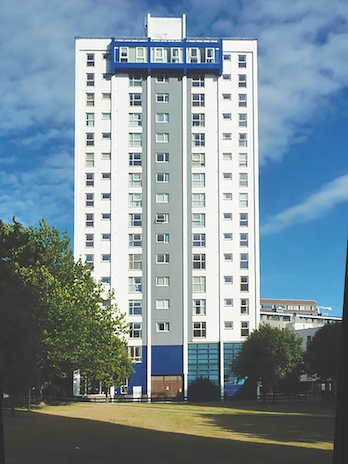A recent judgement in the Technology and Construction Court should be welcome news for building owners worried their post-Grenfell cladding claims may be time-barred. Barry Hembling explains.
Since the Grenfell Tower tragedy of June 2017, there have been numerous legal claims after landlords discovered their buildings were also clad with combustible materials.
One of these cases centred around St Francis Tower in Ipswich: RG Securities (No 2) Ltd v Allianz Global Corporate and Specialty CE, Building Lifeplans Ltd and R Maskell Ltd.
RG Securities purchased the freehold of the tower, built in the 1960s, in 2015. Previously, the property was refurbished by the third defendant R Maskell between 2006 and 2009. During these works, the tower was clad with a Trespa cladding system, largely using polyisocyanurate insulation underneath. There were also some aluminium composite material sections.
The claimant alleged that the cladding system used on St Francis Tower was even more combustible than that used on Grenfell, and raised other concerns about the internal fire compartmentation and safety of the windows. It said that the refurbishment was not compliant and did not have a Building Regulations completion certificate.

St Francis Tower in Ipswich (Credit: Andrew Hill, Wikimedia Commons)
The claim
RG Securities brought a claim that the works were not carried out in a workmanlike or professional manner, or with proper materials, causing the tower to be unfit for habitation and in breach of section 1(1) of the Defective Premises Act (DPA) 1972.
Maskell argued the claim was statute barred under the Limitation Act 1980. This meant any claims based on breaches of contract, or breach of duty under the DPA 1972, that occurred prior to 16 December 2013 – six years before the date the claim form was issued – were time-barred. Maskell therefore applied for summary judgement.
In response, RG Securities asserted that Maskell concealed the fact that Building Regulations approval had not been obtained at the time of the sale in 2015 and as a result, time did not start running – under the terms of the Limitation Act (see box) – until it discovered the concealment in 2018.
The Technology and Construction Court found that RG Securities had an arguable case and dismissed Maskell’s application.
Mr Justice Fraser said “the court can take into account that further relevant evidence on this issue may become available upon the more full investigations of the facts that will take place at the trial” and the “state of evidence on concealment is still not at its final stage”.
Analysis
The case provides important guidance on how the clock is effectively reset for limitation purposes where information material for bringing a claim has been concealed.
It is also interesting in the context of the ongoing scandal of buildings constructed with combustible cladding systems that do not satisfy health and safety requirements. While the UK government has made funding available to progress remedial works, this is contingent on building owners committing to pursue responsible third parties. In many cases, the cladding systems now known to be combustible will have been installed years ago and full details of their safety may not have been known or made available until fairly recently.
A report from the National Audit Office highlighted the failure of that fund to progress remedial works. The government subsequently acknowledged that only in a minority of cases would it be financially justifiable for building owners to bring legal action to recover money and in a significant number of cases some claims could be time-barred.
For those able to pursue claims, the decision in RG Securities v Allianz should be welcome. The case confirms that the limitation period within which cases must be brought is extended where relevant information has been concealed. The extension applies even where the primary limitation period had expired and not merely after the cause of action had accrued.
Under the Limitation Act 1980:
- An action to recover any sum recoverable by virtue of any enactment shall not be brought after the expiration of six years from the date on which the cause of action accrued; and
- Where any fact relevant to the plaintiff’s right of action has been deliberately concealed by the defendant, the period of limitation shall not begin to run until the plaintiff has discovered the concealment or could have with reasonable diligence.
Barry Hembling is a partner at Watson, Farley & Williams.










